The Continental Divide Trail Thru-Hiker Survey (2019)
Welcome to the results of the 2019 Continental Divide Trail Thru-hiker Survey!
The CDT Survey is now in its third year and I would like to extend a huge THANK YOU to everyone who took the time to participate. You’re all champions of life. And thank you, dear reader, for being patient while waiting for this year’s results. As a reward for your patience, we have the largest sample size ever from a CDT class (more on this below).
I started the CDT Survey to create a resource that would (actually) be useful to those of you interested in hiking the Continental Divide Trail. Each year I try to improve data collected and fine-tune the presentation to best help hikers. I would love to hear what you think via comment or email.
A WORD OF WARNING: The data is not going to be 100% guaranteed accurate. Despite my best efforts, there’s nothing scientific about my date collection or presentation. Every year, I get an email from someone criticizing my methods. Remember, I’m just a random guy on the internet trying to help out CDT hikers; take it easy.
Congratulations on now arriving at a spot in the CDT Survey that most readers have probably skipped. Here are the results of Halfway Anywhere’s 2019 Continental Divide Trail Thru-hiker Survey!
Jump to a section

Notes on the data
- This year we had 176 completed surveys – that’s a 70% increase vs. last year and the most respondents in the history of the survey.
- Some responses have been sorted and colored to present the data in a friendlier manner (e.g. northbound vs. southbound responses).
- Not all CDT hikers meticulously document the stats of their thru-hike. Therefore, the data is not going to be 100% accurate. That said, it should be fairly close to the reality of the trail this year.
- I refer to survey respondents collectively as this year’s “class“. Remember, this is a sample and not a comprehensive survey of every single CDT hiker on the trail this year.
- If you find a small and meaningless discrepancy in the data, congratulations. However, if you find a large or obvious error, please let me know and it will be corrected.
- If you’re wondering what this symbol – σ – is, it’s the symbol for standard deviation. If you don’t know what that is, I invite you to use the Google.
- For stats requiring the length of the CDT for a calculation (e.g. average mileage per day over the course of the trail), I use 3,100 mi / 4,989 km (that said, almost nobody actually hikes this distance on the CDT).
- I will be releasing more detailed survey posts focused on CDT Gear, CDT Resupply, CDT Horror Stories, and CDT Advice in the coming weeks. If you would like to be notified of new surveys, click here.
LABELS differentiating hiker segments:
- THRU: Thru-hikers (all)
- THRU-0: Thru-hikers who did NOT complete the CDT
- THRU-1: Thru-hikers who completed the entire CDT
- NOBO: Northbound thru-hikers (all)
- NOBO-0: Northbound thru-hikers who did NOT complete the CDT
- NOBO-1: Northbound thru-hikers who completed the CDT
- SOBO: Southbound thru-hikers (all)
- SOBO-0: Southbound thru-hikers who did NOT complete the CDT
- SOBO-1: Southbound thru-hikers who completed the CDT
If NO LABEL has been appended to a data point, then I used all data collected (i.e. it also includes section hiker data).
SOUTHBOUND DATA: I received responses from 81 southbound thru-hikers. This is more than DOUBLE last year!
The CDT Demographics
Our first section won’t help you prepare for a CDT thru-hike, but that doesn’t mean it isn’t interesting. Here are the HIKER DEMOGRAPHICS.
CDT thru-hiker GENDER
- 67.1% Male
- 31.6% Female
- 0.7% Non-binary
- 0.7% Declined to answer
CDT thru-hiker AGE
- 1.32% < 20
- 7.24% 20-24
- 30.26% 25-29
- 23.03% 30-34
- 8.55% 35-39
- 9.21% 40-49
- 11.84% 50-59
- 7.24% 60-69
- 1.32% >70
Average age: 37 (σ = 13)
Median age: 31
CDT thru-hiker RACE
- 96% White
- 2.7% 2+ Races
- 0.7% Asian
- 0.7% Hispanic or Latino
CDT thru-hiker EDUCATION
- 49.3% Bachelor’s degree
- 22.4% Postgraduate degree
- 16.4% Some college (no degree)
- 8.6% High school or equivalent
- 2.0% Associate degree
- 1.3% Did not graduate high school
CDT thru-hiker COUNTRIES
- Australia, Bulgaria, Canada, Denmark, France, Germany, Israel, Spain, Sweden, Switzerland, United Kingdom, United States (12 TOTAL)
A look at CDT hiker distribution across the world.
A closer look at where hikers come from in Europe.
CDT thru-hiker US STATES
- AK, AL, AZ, CA, CO, CT, GA, ID, IL, IN, KS, KY, MA, MD, ME, MI, MN, MO, MS, MT, NC, NE, NH, NJ, NM, NV, NY, OH, OK, OR, PA, TN, TX, VA, VT, WA, WV, WY (37 TOTAL)
MOST-REPRESENTED COUNTRIES
- USA – 76%
- The United Kingdom – 6%
- Australia, Canada – 4.7%
- France, Germany – 1.3%
MOST-REPRESENTED US STATES
- California – 12.4%
- Washington – 7.1%
- Maryland – 6.2%
- New York, Texas – 5.3%
- Arizona, Minnesota, North Carolina, Oregon – 4.4%
The CDT Thru-hiking Basics
Now things start to get a bit more interesting (and useful for those of you in the “Planning a CDT Hike” phase).
This section examines HIKER EXPERIENCE, HIKER FITNESS, CDT PERMITS, HIKING STATUS, RELATIONSHIP STATUS, and CDT DAYS.
First long-distance hike?
- 17.8% Yes
- 82.2% No
This year, I also asked hikers to rate their level of backpacking experience (on a scale of 1 to 10) prior to beginning the trail. Here’s what we came up with for thru-hikers:
- 9.06 – average experience
- σ = 1.93
THRU-1: 9.35 (σ = 1.41)
THRU-0: 8.23 (σ = 2.38)
The trails most commonly hiked by those with experience were:
- 64.57% Pacific Crest Trail
- 35.43% Appalachian Trail
- 17.14% John Muir Trail
- 6.29% Colorado Trail
- 5.71% Tahoe Rim Trail
- 5.14% Te Araroa Trail
- 5.14% Camino de Santiago
- 3.43% Arizona Trail
- 3.43% GR20
- 3.43% Long Trail
- 14.29% Other Trail
The most common trail this year’s Continental Divide Trail Class had experience with was the Pacific Crest Trail.
While we’re on the topic of experience, let’s look at whether this year’s class TRAINED prior to their thru-hikes and how they RATED THEIR FITNESS before beginning their hikes.
Did you train before your hike?
- 60% Yes
- 40% No
Of this year’s thru-hikers, 57% reported having trained beforehand.
I asked hikers to rate their level of fitness (on a scale of 1 to 10) prior to beginning the trail. Here’s what we came up with for thru-hikers:
- 6.88 – average fitness level
- σ = 1.41
THRU-1: 6.97 (σ = 1.37)
THRU-0: 5.92 (σ = 1.52)
The question of how much money is required for a thru-hike is one that gets asked by a lot of would-be CDT thru-hikers each year. Sure, I may have written a post on the subject, but there’s nothing better than hard data.
THRU-1
$5,963
The average amount spent on the entirety of a thru-hike
(σ = $2,535)
THRU-1
$40.65
The average amount spent per day on a thru-hike
(σ = $15.65)
THRU-1
$898
The average amount spent on gear prior to starting
(σ = $714)
Beginning a thru-hike on your own can sound scary and intimidating, but it turns out the majority of thru-hikers (and hikers in general) began their hikes alone.
Did you begin your hike alone?
- 59.2% Yes
- 20.4% Began with a partner or spouse
- 19.1% Began with a friend
- 1.3% Arranged to start with other hikers (whom they had not met prior to beginning the CDT)
What percentage of the time did you spend HIKING alone?
- 14.57% – < 10% of the time
- 6.62% – 10-25% of the time
- 3.97% – 25-50% of the time
- 24.50% – 50-75% of the time
- 13.90% – 75-90% of the time
- 36.42% – > 90% of the time
64.27% – Average amount of time thru-hikers, spent hiking alone (σ = 34)
Hiking alone here measures the amount of time that hikers weren’t physically walking with someone down the trail – not necessarily that they weren’t hiking with others over the course of the day.
What percentage of the time did you CAMP alone?
- 20.53% – 0% of the time
- 13.25% – 1-10% of the time
- 8.61% – 11-20% of the time
- 7.95% – 21-30% of the time
- 9.93% – 31-50% of the time
- 13.25% – 51-75% of the time
- 16.56% – 76-90% of the time
- 9.93% – > 90% of the time
41.2% – Average percentage of nights thru-hikers, spent camping alone (σ = 36.6). When we look at thru-hikers who finished, this translates to an average of 59 nights spent camping alone.
But after all that hiking and camping, did CDT thru-hikers end up sticking with the people they started their adventures with? This year, I added a question to find out.
If you began your hike with someone else, did you remain with this person for the entirety of the trail?
- 59.4% Yes
- 15.9% No, we decided it wasn’t for the best
- 10.1% No, this was never the plan
- 13.0% Yes, for the most part
- 1.40% No, we were a couple and we’ve now broken up
Yes, the CDT destroyed at least one romantic hiker relationship. If only we had more information about how hikers were torn apart and brought together by the trail. Well, friend, I have good news – we do! This year I also added a question regarding hiker relationship status before, during, and after hiking the trail. Here are all the juicy details:
When you began the trail, were you in a relationship?
- 44.7% No, and I am still single
- 43.5% Yes, and I am still with the same person
- 4.1% No, but now I am in a relationship with someone I met on the CDT
- 7.6% Yes, but I am now single
The CDT Start Dates
There is no overarching permit required to hike the CDT (not yet). Instead, you are required to obtain permits from strategically located magical wilderness areas along the trail (more on the Glacier Permit below). Most hikers head northbound from the US-Mexico border and despite there not being a limit to the number of people who can begin from the southern terminus each day, it is relatively difficult to get to (more on the CDT Shuttle below).
- April 19 – NOBO Average start date
- April 21 – NOBO Average start date for hikers who said they were happy with their start date
- April 10 – NOBO Average start date for hikers who said they would have liked to begin their hikes later
- April 18 – NOBO Average start date for hikers who said they would have liked to begin their hikes earlier
- June 2 – NOBO Average date leaving Chama, NM
- 44 – NOBO Average number of days taken to reach Chama, NM
- 18.2 mi / 29.3 km – NOBO Average daily distance between the southern terminus and Chama, NM
- April 17 – NOBO-0 Average start date
- April 20 – NOBO-1 Average start date
- September 20 – NOBO-1 Average completion date
THRU-1
147
The average length of a thru-hike
(σ = 20)
NOBO-1
151
The average length of a thru-hike
(σ = 19)
SOBO-1
134
The average length of a thru-hike
(σ = 18)
- June 15 – SOBO Average start date
- June 13 – SOBO Average start date for hikers who said they were happy with their start date.
- May 31 – SOBO Average start date for hikers who said they would have liked to begin their hikes later
- June 27 – SOBO Average start date for hikers who said they would have liked to begin their hikes earlier
- June 22 – SOBO-0 Average start date
- June 14 – SOBO-1 Average start date
- October 27 – SOBO-1 Average date reaching the southern terminus
The CDT Hiking
So far we’ve covered a lot of interesting information, but this is a survey about hiking – so we should probably talk about hiking.
This section delves into the HIKING STATS, including DAILY MILEAGE, the number of ZEROES/NEAR-OS taken, ALTERNATE ROUTES taken, and whether hikers FLIP-FLOPPED, hiked the ENTIRE CDT, or would hike the CDT AGAIN.
THRU-1
146.67
The average number of days of an entire thru-hike
(σ = 20.1)
THRU-1
129.80
The average number of days hiking (total minus zero days)
(σ = 17.8)
THRU-1
41.52 mi
The average longest day (66.82 km)
(σ = 9.08 mi / 14.61 km)
THRU-1
23.88 mi
The average daily mileage (38.43 km)
(σ = 3.21 mi / 5.17 km)
THRU-1
17.88
The average number of zero days
(σ = 10.48)
THRU-1
14.23
The average number or near-o days
(σ = 10.7)
Would you consider hiking the CDT again?
THRU
75.5% Yes
24.5% No
THRU-1
72.3% Yes
27.7% No
THRU-0
84.6% Yes
15.4% No
Did you flip-flop? (Flip-flopping is the act of skipping a section of trail and then coming back to complete the skipped section later in the hike)
THRU
45.7% Yes
54.3% No
NOBO
50% Yes
50% No
SOBO
21.2% Yes
78.8% No
If you flip-flopped, what was your reason for doing so?
- 91.5% Snow
- 8.5% Personal/Logistical
Did you encounter any unforeseen problems because of snow?
- 63.8% – Yes
- 36.2% – No
Of those who responded “Yes”, here is the breakdown of the issues encountered:
- 63.2% – Flip-flopped
- 16.8% – Skipped a section
- 12.6% – Didn’t have the proper gear
- 7.4% – Didn’t have the proper experience
Most people who begin thru-hikes of the Continental Divide Trail do so with the intention of completing the entirety of the hike. Unfortunately, not everyone seeking border-to-border glory will complete the entirety of the trail. A large percentage of people expecting to hike the CDT next year (and every year), will fail in their quests.
We’re going to take a look here at COMPLETION RATES, but we are doing so with a caveat. Since I distribute this survey myself, and because it is in no way required of CDT hikers, the survey respondents are a self-selecting group who (likely) skew toward having completed the trail. A hiker who quit during their first week of hiking in April is (probably) paying far less attention and caring far less about a Continental Divide Trail survey released in the fall. That said, it doesn’t mean we won’t still look at the data.
THRU
74.3%
The percentage of survey respondents who completed the CDT.
NOBO
67.9%
The percentage of northbound survey respondents who completed the CDT.
SOBO
91.2%
The percentage of southbound survey respondents who completed the CDT.
It may sound straightforward enough, “Did you complete the CDT? Yes or no?”, but what constitutes a finish isn’t necessarily the same for everyone. Some people insist on unbroken steps between Mexico and Canada to constitute a thru-hike while others forgive skipping a road walk or hitchhiking around a fire closure. To get a better idea of how much of the trail this year’s finishers hiked, I asked about their footsteps between the terminuses.
Did you hike a continuous and unbroken footpath between Mexico and Canada?
- 50.5% – Yes, and I road walked around any fire closures
- 0.9% – Yes, but I skipped the fire closures
- 37.6% – Mostly, but I may have missed a few miles
- 11% – No, I skipped or hitched past small sections of trail
Now for the ALTERNATES! Many CDT hikers use the Atlas Guides (aka Guthook) app for navigation. This app shows the official CDT as well as many of the alternates, which are colored within the app to distinguish them from the official route I’ve included the colors of each alternate below since many hikers simply use these colors to refer to/identify these other trails (e.g. “The brown alternate south of Grants”). If you’re interested in the app (and if you’re hiking the CDT, you should be), you can find it here: iOS/Android.
I use the following colors to indicate the popularity of each alternate: OVER 75%, 50-75%, 25-50%, UNDER 25%.
NEW MEXICO ALTERNATES
- Columbus Alternate (Teal): 1.77%
- Gila River Alternate (Pink): 95.58%
- Gila River High Route Alternate (Orange): 34.51%
- Pie Town Alternate via Mangas Mountain (Blue): 60.18%
- Cebolla Wilderness Alternate (Brown): 54.87%
- Bonita-Zuni Alternate (Blue): 38.94%
- Mount Taylor Alternate (Purple): 60.18%
- Ghost Ranch Alternate (Green): 81.42%
COLORADO ALTERNATES
- Great Divide Alternate (Green): 27.43%
- Elwood Pass (Blue): 17.70%
- Creede Cutoff (Brown):36.28%
- Mirror Lake Alternate (Purple): 28.32%
- Collegiate East: 4.46%
- Silverthorne Alternate (Teal): 31.86%
- Montezuma Alternate: 1.77%
- Argentine Spine (Pink): 23.89%
- Rocky Mountain National Park Shortcut (Orange): 43.36%
WYOMING ALTERNATES
- Ley Alternate south of Rawlins: 48.67%
- Big Sky Cutoff: 1.79%
- Wind River High Route: 1.79%
- Cirque of the Towers (Blue): 70.80%
- Knapsack Col (Pink): 41.59%
- Leeds Creek (Teal): 22.12%
- Teton Alternate: 1.79%
IDAHO/MONTANA ALTERNATES
- Mack’s Inn Alternate (Blue): 58.41%
- Super Butte Cutoff: 12.39%
- Anaconda Cutoff (Blue): 71.68%
- Butte Connector (Brown): 1.77%
- Spotted Bear Pass (Orange): 69.91%
- Chief Mountain (Pink): 49.56%
“Ley Alternate” refers to an alternate route on the Ley Maps – maps produced by CDT hiker Jonathan Ley. More on the Ley Maps here.
But what of the hikers who failed to make it to the opposite border? What was it that stopped them? How far did they make it?
Why hikers didn’t complete the CDT this year:
- 40% Injury
- 17.1% Snow
- 14.3% Personal
- 11.4% Family
- 5.7% Weather
- 5.7% Financial
- 2.9% Work
- 2.9% Illness
The number of miles completed by hikers who didn’t finish the CDT
- 11.4% – < 500 mi / 805 km
- 25.7% – 500 to 1,000 mi / 805 to 1,609 km
- 25.7% – 1,000 to 1,500 mi / 1,609 km to 2,414 km
- 11.4% – 1,500 to 2,000 mi / 2,414 to 3,218 km
- 22.9% – 2,000 to 2,500 mi / 3,218 to 4,023 km
- 5.7% – > 2,500 mi / 4,023 km
Average: 1,384 mi / 2,277 km
σ = 728 mi / 1,172 km
Every year (for five years now) at the end of April, there’s an event held in Silver City, New Mexico (a town the CDT passes through) called Trail Days.
I asked hikers whether they attended Trail Days and, for those who attended, whether they would recommend it to future CDT hikers
Did you attend Trail Days?
- 22.5% – Yes
- 77.5% – No
If you attended Trail Days, would you recommend it?
- 76.9% – Yes
- 23.1% – No
Before we move on to the next section, CDT Resupply, there’s one more piece of data I collected from hikers this year regarding their hikes. I asked hikers which animals they encountered over the course of their hikes. All anyone back home is going to care about is your bear or mountain lion encounter story, so let’s check out what your odds of delivering are.
Which ANIMALS did you see on the Continental Divide Trail?
- 45% – Elk
- 43% – Moose
- 38% – Mountain goat
- 33% – Black bear
- 31% – Rattlesnake
- 30% – Fox
- 27% – Owl
- 25% -Grizzly bear
- 13% – Skunk
- 6% – Bobcat
- 6% – Mountain lion (Cougar)
- 3% – Tortoise
- 2% – Porcupine
- 2% – Wolf
The CDT Resupply
The word “resupply” gets thrown around a lot in the context of thru-hiking. What is resupply? It’s basically getting yourself more food to power more hiking. Resupply on the Continental Divide Trail is still a question that many find to be intimidating. Fortunately, we have many hundreds of experienced thru-hikers from this year who have shared their strategies with us.
Here’s this year’s RESUPPLY STRATEGY which includes the NUMBER OF RESUPPLIES, number of RESUPPLY BOXES sent, number of DAYS BETWEEN RESUPPLIES, hikers’ FAVORITE TOWNS, hikers’ LEAST FAVORITE TOWNS, and where hikers SUGGEST MAILING a resupply box.
THRU-1
27.48
The average number of resupplies over the entire trail
(σ = 5.2)
THRU-1
5.34
The average number of days between resupplies
(σ = 1.1)
THRU
5.3
The average number or pre-trail resupply boxes prepared
(σ = 6.5)
Resupply strategy used by thru-hikers
- 9.2% Mailed ALL resupplies
- 82.9% Mailed SOME resupplies
- 7.9% Mailed NO resupplies
Most hikers worry a lot about resupply but remember you can mail yourself boxes from on the trail and you do not have to have ALL your resupply boxes prepared ahead of time. Many towns have large supermarkets (and post offices).
That said, it can be helpful to mail resupply boxes at some locations along the trail. This may be due to a limited selection of food, high prices, or perhaps something else. Oftentimes, hikers also must hitchhike to town to resupply. In addition to asking hikers where they would DEFINITELY SUGGEST MAILING a resupply box, I asked where, if anywhere, they had DIFFICULTY HITCHHIKING.
What locations would you DEFINITELY SUGGEST MAILING a resupply box?
- Pie Town (New Mexico) – 72.37%
- Ghost Ranch (New Mexico) – 62.50%
- Doc Campbell’s (New Mexico) – 56.58%
- Leadore (Bannock Pass, Idaho) – 31.58%
- South Pass City* (Wyoming) – 26.97%
- Lima (Montana) – 26.32%
- Encampment (Battle Pass, Wyoming) – 25.66%
- East Glacier Village (Montana) – 19.74%
- Atlantic City* (Wyoming) – 18.42%
- Twin Lakes (Colorado) – 16.45%
- Old Faithful Village (Yellowstone, Wyoming) – 15.13%
Brooks Lake Lodge (Wyoming) – 14.47%(Brooks Lake Lodge does not accept resupply packages)- Benchmark Wilderness Ranch (Montana) – 12.5%
*If you resupply at South Pass City or Atlantic City, it will be one or the other, not both (they are at the same point in the trail)
As part of my quest for better backpacking meals, I asked CDT hikers to share their favorite DEHYDRATED MEALS and BACKPACKING SNACKS. More on this to come in the CDT Resupply Guide.
FAVORITE BACKPACKING MEALS
FAVORITE BACKPACKING SNACKS
*These were also among the foods that hikers reported becoming the sickest of.
What CHANGES would you make to your resupply strategy if you were to go back and do it all over again?
- Send MORE VARIETY in boxes (24.34%)
- Mail boxes from ON TRAIL instead of ahead of time (18.42%)
- Send HEALTHIER FOOD in boxes (15.79%)
- Send FEWER resupply boxes* (15.79%)
- Send LESS FOOD in boxes (13.16%)
*The average number of boxes sent by hikers who said they would have liked to have sent FEWER boxes was 10.95.
THRU
20%
The number of thru-hikers who went stoveless for the entirety of their hikes.
If we take this to mean that ten is the maximum number of resupply boxes a thru-hiker would have liked to have sent this year, then according to our recommendation above (from the question, “Where would you definitely suggest mailing a resupply box?”), prospective thru-hikers should consider sending resupply boxes to the following locations:
- Pie Town (New Mexico) – 72.37%
- Ghost Ranch (New Mexico) – 62.50%
- Doc Campbell’s (New Mexico) – 56.58%
- Leadore (Bannock Pass, Idaho) – 31.58%
- South Pass City* (Wyoming) – 26.97%
- Lima (Montana) – 26.32%
- Encampment (Battle Pass, Wyoming) – 25.66%
- East Glacier Village (Montana) – 19.74%
- Atlantic City* (Wyoming) – 18.42%
- Twin Lakes (Colorado) – 16.45%
- Old Faithful Village (Yellowstone, Wyoming) – 15.13%

I asked WHERE HIKERS RESUPPLIED – not where they simply stopped/passed through, but where they actually purchased, picked up, were given, or otherwise came into a new stock of food for the next section of trail. For example, the trail passes through the middle of Lordsburg; theoretically, all thru-hikers who completed the trail will have been there, but not all thru-hikers may have resupplied there. Make sense? I hope so because if you’re struggling with this, you’re going to have issues on the trail.
Locations are listed in geographical order from Mexico to Canada (that’s south to north in case you’re unsure) and, again, I used the following colors to indicate each resupply stop’s popularity: OVER 75%, 50-75%, 25-50%, UNDER 25%.
NEW MEXICO RESUPPLY
- Lordsburg (96.46%)
- Columbus (0.88%)
- Deming (0.88%)
- Silver City (100%)
- Doc Campbell’s (92.92%)
- Truth or Consequences (0.88%)
- Reserve (15.93%)
- Pie Town (93.81%)
- Quemado (1.77%)
- Grants (98.23%)
- Albuquerque (0.88%)
- Cuba (97.35%)
- Santa Fe (31.86%)
- Ghost Ranch (87.61%)
- Taos (0.88%)
- Chama (Cumbres Pass)
- Davila Ranch (0.88%)
COLORADO RESUPPLY
- Pagosa Springs (Wolf Creek Pass) (62.83%)
- South Fork (Wolf Creek Pass) (20.35%)
- Platoro (29.20%)
- Del Norte (18.58%)
- Creede (41.59%)
- Silverton (Stony Pass) (6.19%)
- Durango (0.88%)
- Lake City (Spring Creek Pass) (46.9%)
- Monarch Mountain Lodge (Monarch Pass) (23.01%)
- Salida (Monarch Pass) (89.38%)
- Buena Vista (7.08%)
- Twin Lakes (81.42%)
- Leadville (75.22%)
- Copper Mountain (42.48%)
- Breckenridge (46.9%)
- Frisco (4.42%)
- Silverthorne (48.67%)
- Dillon (21.24%)
- Idaho Springs (2.65%)
- Winter Park (26.55%)
- Fraser (15.93%)
- Denver (12.39%)
- Grand Lake (89.38%)
- Steamboat Springs (Rabbit Ears Pass) (92.04%)
Find all CDT Resupply posts here.
WYOMING RESUPPLY
- Encampment (Battle Pass) (64.60%)
- Riverside (Battle Pass) (24.78%)
- Rawlins (97.35%)
- South Pass City (60.18%)
- Atlantic City (33.63%)
- Lander (65.49%)
- Pinedale (66.37%)
- Lava Mountain Lodge (Togwotee Pass) (5.31%)
- Dubois (Togwotee Pass) (78.76%)
- Jackson (Togwotee Pass) (15.93%)
- Brooks Lake Lodge (23.01%)
- Grant Village (Yellowstone) (52.21%)
- Old Faithful Village (Yellowstone) (83.19%)
- Mammoth (Yellowstone) (1.77%)
- Cody (2.65%)
IDAHO/SOUTHERN MONTANA RESUPPLY
- West Yellowstone (30.97%)
- Island Park (Mack’s Inn) (58.41%)
- Big Sky (2.65%)
- Ennis (2.65%)
- Lima (82.30%)
- Leadore (Bannock Pass) (79.65%)
- Tendoy (2.65%)
- Salmon (15.93%)
- Jackson (7.08%)
- Darby (Lost Trail Pass) (69.03%)
- Hamilton (Lost Trail Pass) (1.77%)
- Wisdom (2.65%)
NORTHERN MONTANA RESUPPLY
- Anaconda (71.68%)
- Butte (23.01%)
- Helena (89.38%)
- Elliston (3.54%)
- Lincoln (78.76%)
- Benchmark Wilderness Ranch (20.35%)
- Augusta (55.75%)
- East Glacier Village (98.23%)
- Two Medicine (58.41%)
- St Mary (5%)
- Many Glacier (69.03%)
Now we know the most popular stops for resupplying and for sending boxes, but what about hikers’ FAVORITE (and LEAST FAVORITE) resupply stops?
NOTE: When asking this question I specify “Favorite/Least Favorite” means where hikers most/least enjoyed, not where had the best/worst resupply options (although these could be the same).”
FAVORITE RESUPPLY STOP
Salida, CO
via Monarch Pass (20.83%)
LEAST FAVORITE RESUPPLY STOP
Leadore, ID
via Bannock Pass (11.93%)
FAVORITE RESUPPLY STOPS
- NEW MEXICO: Doc Campbell’s (4.63%)
- COLORADO: Salida (20.83%)
- WYOMING: Lander (5.56%)
- IDAHO/MONTANA: Anaconda (10.19%)
LEAST FAVORITE RESUPPLY STOPS
- NEW MEXICO: Cuba (10.10%)
- COLORADO: N/A
- WYOMING: Rawlins (7.34%)
- IDAHO/MONTANA: Leadore (11.93%)
Other noteworthy least favorite places include Ghost Ranch (NM) and Benchmark Wilderness Ranch (MT).
The CDT Gear
Perhaps the thing Continental Divide Trail hikers spend the most time obsessing over before (and on) the trail, gear plays an essential role in a thru-hike. There is no magical gear combination that will guarantee you a successful thru-hike (if you know otherwise, please let me know), but there is certainly gear that can help (and hurt) the pursuit of this goal.
Each year I do a deep dive into the gear used by CDT hikers in my CDT Gear Guide, but I like to offer a preview of what’s to come in this first CDT Survey post.
Let’s take a look at what this year’s CDT Class had with them out on the trail.
THRU-1
14.71 lbs
Average pre-hike base weight (6.67 kg)
(σ = 5.30 lbs / 2.4 kg)
THRU-1
14.63 lbs
Average post-hike base weight (6.64 kg)
(σ = 5.49 lbs / 2.29 kg)
THRU-1
-1.28 oz
Average total change in base weight (36 g)
(σ = 2.93 lbs / 1.33 kg)
THRU
52.37 L
Average backpack size
THRU
17.6°F
Average sleeping bag rating (-8°C)
THRU-1
4.36
Average total number of shoes used
There’s more detailed and more interesting breakdowns of this information on the way in this year’s CDT Gear Guide. For now, let’s take a peek at some of the gear thru-hikers were using on the trail this year. Here are the FAVORITE “Big 4” items: PACKS, SHELTERS, SLEEPING BAGS, and SLEEPING PADS (I know it’s the “Big 3”, but I include sleeping pads).
Again, there will be extensive breakdowns in the CDT Gear Guide.
HIGHEST-RATED BACKPACKS

- Hyperlite Mountain Gear Windrider (Hiker Rating: 5/5)
- Gossamer Gear Mariposa (4.8/5)
- ULA Circuit (4.47/5)
- Granite Gear Crown2 (4.44/5)
- Osprey Exos (4.33/5)
HIGHEST-RATED SHELTERS

- Big Agnes Copper Spur HV UL1 (Hiker Rating: 4.90/5)
- Big Agnes Copper Spur HV UL2 (4.71/5)
- Big Agnes Tiger Wall UL2 (4.71/5)
- Big Agnes Fly Creek HV UL1 (4.43/5)
- Tarptent Notch (4.40/5)
HIGHEST-RATED SLEEPING BAGS
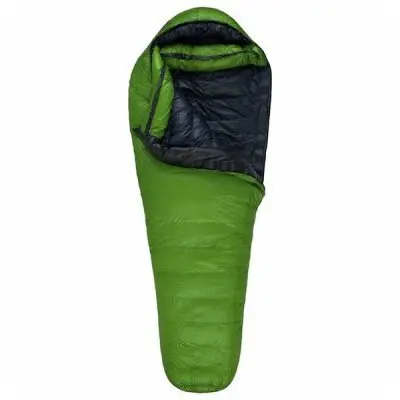
- Western Mountaineering Versalite (Hiker Rating: 4.94/5)
- Feathered Friends Egret 20 (4.60/5)
- Enlightened Equipment Revelation 10 (4.53/5)
- Katabatic Sawatch 15 (4.50/5)
- Western Mountaineering UltraLite (4.45/5)
HIGHEST-RATED SLEEPING PADS
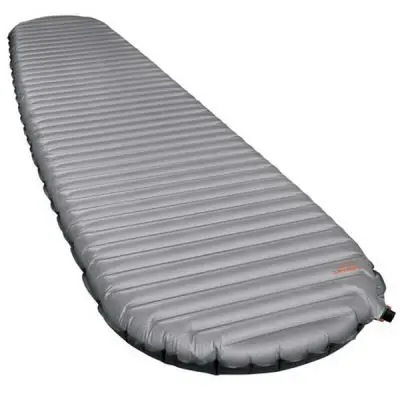
- Therm-a-Rest NeoAir XTherm (Hiker Rating: 4.61/5)
- Therm-a-Rest NeoAir XLite, Short (4.55/5)
- Therm-a-Rest NeoAir UberLite (4.50/5)
- Therm-a-Rest NeoAir XLite (4.49/5)
- Sea to Summit UltraLight Insulated Mat (4.38/5)
HIGHEST-RATED JACKETS
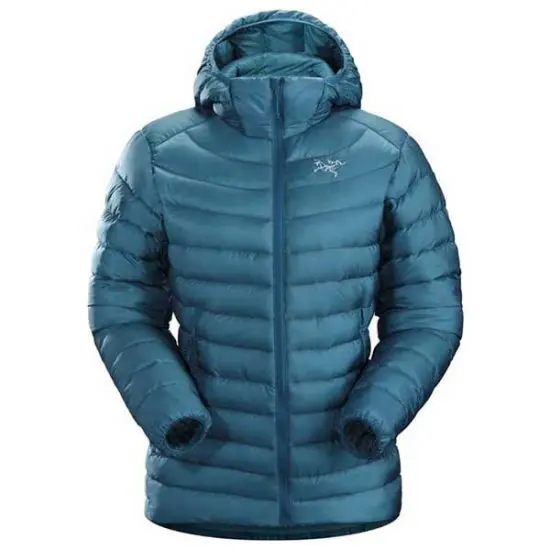
- Arc’teryx Cerium LT Hoody (Hiker Rating: 5/5)
- Patagonia Micro Puff Hoody (4.73/5)
- Montbell Plasma 1000 (4.71/5)
- Mountain Hardwear Ghost Whisperer (4.69/5)
- Mountain Hardwear Ghost Whisperer (Hooded) (4.43/5)
HIGHEST-RATED SHELLS

- Arc’teryx Beta SL Hybrid (Hiker Rating: 4.86/5)
- Outdoor Research Helium II (4.05/5)
- Marmot Pre-Cip (3.92/5)
- Montbell Versalite (3.83/5)
- Frogg Toggs Ultra-Lite 2 (3.82/5)
HIGHEST-RATED SHOES

- Merrell Moab 2 Vent (Hiker Rating: 5/5)
- La Sportiva Wildcat (4.80/5)
- Salomon XA Pro 3D (4.64/5)
- Altra Timp (4.29/5)
- Altra Lone Peak (4.28/5)
HIGHEST-RATED WATER FILTERS

- Aquamira (Hiker Rating: 4.60/5)
- Iodine (4.50/5)
- Platypus GravityWorks (4.50/5)
- Bleach (4.33/5)
- Katadyn BeFree (4.11/5)
HIGHEST-RATED STOVES

- Snow Peak GigaPower 2.0 (Hiker Rating: 4.94/5)
- MSR PocketRocket 2 (4.66)
- BRS 3000T (4.64/5)
- Jetboil Flash (4.56/5)
- Jetboil MiniMo (4.50/5)
This is just the tip of the proverbial thru-hiking iceberg in the gear department. As mentioned (multiple times) above, I will soon be publishing a detailed breakdown of the CDT Class of 2019’s gear. This will include shoes, snow gear, luxury items, what hikers didn’t like about their gear, what gear decisions (might have) helped hikers to a successful thru-hike, and how hikers would change/adapt their gear for a future hike.
Here’s a preview of what this year’s class had to say about gear:
- An inflatable sleeping pad would almost be a necessity because of the ground being so uneven/lumpy or rocky. Definitely would recommend a rechargeable headlamp (especially for SOBO hikers)
- Test your shelter in heavy rain + hail before the trip, so you trust it!
- Keep it simple. There is too much hype on gear with marginal differences. Lots of stuff will work if it is light and durable. Most gear can be replaced along the way if not.
- This trail is harder on gear than the Pacific Crest Trail. Peak Design Capture Clip is fantastic.
- Snow gear was a big part of our trip. The MSR Reactor in the San Juans (Colorado) was clutch.
Phones on the trail are a fact of life. They are hikers’ cameras, GPS devices, televisions, music players, town-researching devices, and (sometimes) SOS devices. There are a number of APPS commonly used by Continental Divide Trail hikers – and even one designed specifically for the CDT (that you should most certainly invest in). here are the apps I also asked hikers about the APPS they used on the CDT and the TYPE OF PHONE they used on the trail. The responses were:
WHAT APPS DID YOU USE ON THE CDT?
- 92% Atlas Guides aka Guthook (Android/iOS)
- 52% Avenza Maps (Android/iOS)
- 18.86% Gaia (Android/iOS)
- 10.86% PeakFinder (Android/iOS)
WHAT TYPE OF PHONE DID YOU USE ON THE CDT?
- 53.76% iOS (iPhone)
- 44.51% Android
- 1.73% Other/No phone
The CDT Hiker Health
Water treatment and hygiene is a big consideration for hikers (at least it should be, you filthy animal). That said, it’s typically something a thru-hiker will worry less about as the trail goes on.
Some hikers religiously filter all the water they drink – it doesn’t matter if it comes out of a hotel sick or a puddle with a cow pooping in it. Other hikers will “not filter in the Sierra”, “not filter above 10,000 ft / 3,048 m”, or “not filter running water” (this last one is absolutely not a good idea – running water can definitely get you sick).
Obviously, everyone wants to look cool in front of their friends by not filtering water, but there are risks to the badass thru-hiker lifestyle (and to drinking dirty, giardia-infested water). Here I ask hikers how often they treated water sources and whether they got get sick (defined as three or more days of digestive issues or diagnosed giardia)?
- 2.9% Always treated, got sick
- 47.7% Always treated, never got sick
- 6.4% Mostly treated, got sick
- 25% Mostly treated, never got sick
- 0.6% Sometimes treated, got sick
- 14.5% Sometimes treated, never got sick
- 2.9% Never treated, never got sick
Looking at this another way, we can see:
- 50.58% of hikers always treated their water and 5.75% of these hikers got sick
- 31.4% of hikers mostly treated their water and 25% of these hikers got sick
- 15.12% of hikers sometimes treated their water and 3.85% of these hikers got sick
- 2.91% of hikers never treated their water and 0% of these hikers got sick
In total, a reported 9.88% of hikers came down with something akin to giardia, and less than 3% never filtered (those who don’t filter are typically quite staunch in their commitment to their strategy; read: don’t readily admit to becoming sick from not filtering).
The CDT Likes and Dislikes
This may come as a shock, but the Continental Divide Trail is a long hike with a lot to see. Here is a look at the FAVORITE and LEAST FAVORITE SECTIONS of the trail.
What was your FAVORITE CDT section?
- Northern Montana
- Colorado
- New Mexico
- Wyoming
- Southern Montana/Idaho
Specifically, the FAVORITE sections were:
- 36.53% – Wind River Range (Wyoming)
- 22.75% – Glacier National Park (Montana)
- 16.17% – Gila River Alternate (New Mexico)
- 10.78% – San Juan Mountains (Colorado)
- 4.79% – Anaconda Pintler Wilderness (Montana)
What was your LEAST FAVORITE CDT section?
- Southern Montana/Idaho
- New Mexico
- Colorado
- Wyoming
- Northern Montana
Specifically, the LEAST FAVORITE sections were:
- 22.72% – Pie Town to Grants (New Mexico)
- 20.13% – Great Divide Basin (Wyoming)
- 14.94% – Idaho/Montana Border
- 13.63% – New Mexico Bootheel
- 7.79% – Bob Marshall Wilderness
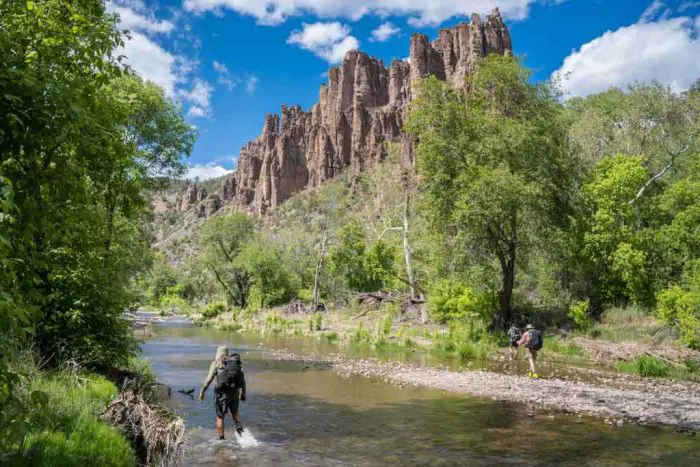




Continental Divide Trail Resources
The planning phase of a Continental Divide Trail thru-hike can sometimes be just as long and intensive as the thru-hike itself (or sometimes even longer). To help hikers best invest their pre-hike planning time, I ask which CDT RESOURCES hikers found MOST and LEAST VALUABLE when planning their hikes.
Which resource(s) did you find MOST VALUABLE when planning your hike?
- 33.53% – Halfway Anywhere* :)
- 22.35% – Friends/Former thru-hikers
- 10.59% – Yogi’s Guide
- 7.06% – Hiker Blogs
Which resource(s) did you find LEAST VALUABLE when planning your hike?
- 33.56% – Advice from non-thru-hikers
- 24.16% – Retail store employees
- 17.45% – CDT Facebook Pages/Groups
*It’s awesome to see that Halfway Anywhere is helping CDT hikers plan and execute their hikes (especially to see that people think this even after hiking the trail). THANK YOU, everyone, who supports the site and encourages me to keep doing what I’m doing.
The CDT Fear and Advice
When asked if hikers ever felt LEGITIMATELY AFRAID on the trail, this is what they had to report (more of this will be included in a future post, but for now, here are some that stood out):
- Lake Ann Pass: no trail visible, really steep, a lot of soft snow with patches of loose gravel and a large cornice on the north side.
- Hitched with a big rig truck driver, and learned way more about the drugs that are used while driving and logbook fabrication than I ever wanted to know!
- Cuba, New Mexico. There are some shady people hanging around all the time and hitting you up for money. They also tried to steal my friend’s clothes from the laundromat there.
- Doing sketchy traverses and almost vertical ascents on snowshoes in Colorado, post-holing shoulder first and getting stuck in the snow.
- There were a few times I was high and exposed on a ridge during a thunderstorm.
- Being charged by a grizzly.
I also asked this class what ADVICE FOR FUTURE CDT HIKERS they had. This will be thoroughly documented in the post CDT: Advice For The Future, but for now, here are some of my favorites:
- Plan less, but be prepared for exposure and cold. It really felt like most of the trail was not in trees, which was awesome, but challenging – wind, thunderstorms, and sun.
- The CDT is not like any other trail, so try not to micro-manage planning from back home.
- Get at least some people to hike around if not with. It helps tremendously near the end as everything starts to wear down. Morale is an important factor. Make sure you’re having more fun than not. Really listen to yourself, your body. Know when it needs rest, food, water. Focus on breathing at elevation, and if you can, familiarize yourself with the mountains of Colorado, because it can get mountaineering-y.
- Take all advice from other hikers with a pinch of salt. You know your body and what you’re capable of doing! Don’t let what other hikers are doing affect your hike.
- Try to save twice as much money as you think you need. Double your Pacific Crest Trail budget! You need a LOT of town time on the CDT.
CDT Survey Collection
Finally, another HUGE THANK YOU to all the hikers who completed this year’s survey, including (but not limited to): Airplane Mode, Animal, AtHome, Babyfood, Bambi, Bartender, Bastion, Bear Bait, Bear Ghost, Bearsock, Beast, Big bear, Big Sky, Blasphemy, Blue Collar, Bootscoot, Breakfastbeer, Brick, Burrban, Cat Lady, Cheese, Cheezus, Cliff Jumper, Compass, Corky, Dahn, Dan, Demin Dan, DinoDNA, Dirty Bowl, DogMa, Dosu Kinuta Grim Reaper of Miles, Double Dip, Doubleshot, Driver, Ducky, DustBuster, Elevator, Fenway, Flow, Fruit Salad, Ghosthiker, Grandfeather, Hammer, Happy, Happy Heidi, Hatchet, HeatWave, Hobbit, Horse Hater, Human Torch, Jackrabbit, Javelin, Jennifer, Jeopardy, Jetpack, Joe Dirt, joemama, Juke Box, Leapfrog, Legion, Lost Photo, Lumber, Macro, Maps, Marsh Mouse, Mary Poppins, Maxheap, Monk, Monty, Moonshine, Morning Glory, Mountain Goat, Mtn Minnie, Mudslide, NASCAR, Neon, Nom, OB, Open, papillion, Peabody, Pied Piper, Pincushion, Pineapple, Pinky, Poles, Pulp Fiction, Radio, Rainskirt, Rattlebones, Rattles, ReallySorry, redfish, Relentless, Rocket, Ronin, Rooster, Rooster, Ross’s Momkey, S2, Sahib, Salty, Screamin’ Eagle, Seadog, Shamrock, Sharkbait, SHORTCUT, Slim, Smooth, Snacks, Snake Legs, Snow White, Snowcat, Soda, Solar Sam, Southbound, SPACE JAM, Stats, Steamboat Willie, Stogie, Stoke, Storm Dasher, Stretch, Stretch, Stuck with my real name, Sultry bear, Sunny, Sunshine, Sunshine, Swamp, T-coZee, Tall Boy, Taxi, Tazbaz, Thunder ⚡️ Fluff!, TicTac, Toast, Toggs, Townie, Trailbride, Twig, Twiggzy, Two slice, Ultraviolet (UV), Undecided, Ungerwhere, Waterfall, Where’s Waldo, Wormwood, and Wrong Way.
It takes a long time to put this together each year and I would love your feedback. Please COMMENT BELOW or get in touch to tell me what you think about this year’s survey or what you think will improve future surveys!
Affiliate Disclosure: This page may contain affiliate links, which means I may receive small commissions for purchases made via these links at no additional cost to you. This helps pay the bills and keep the site up and running. Thank you for your support!
12 Comments
Comments are closed.


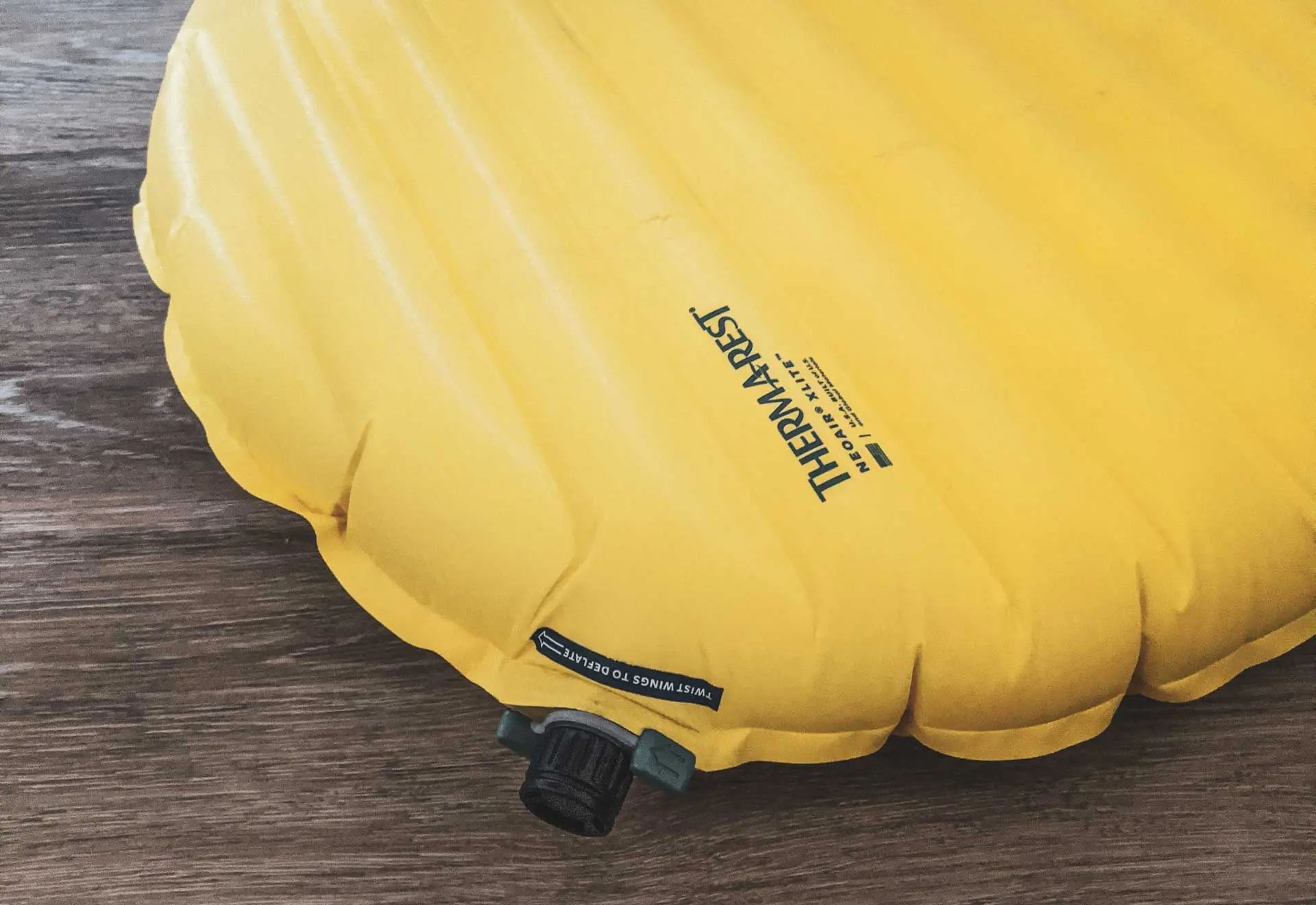
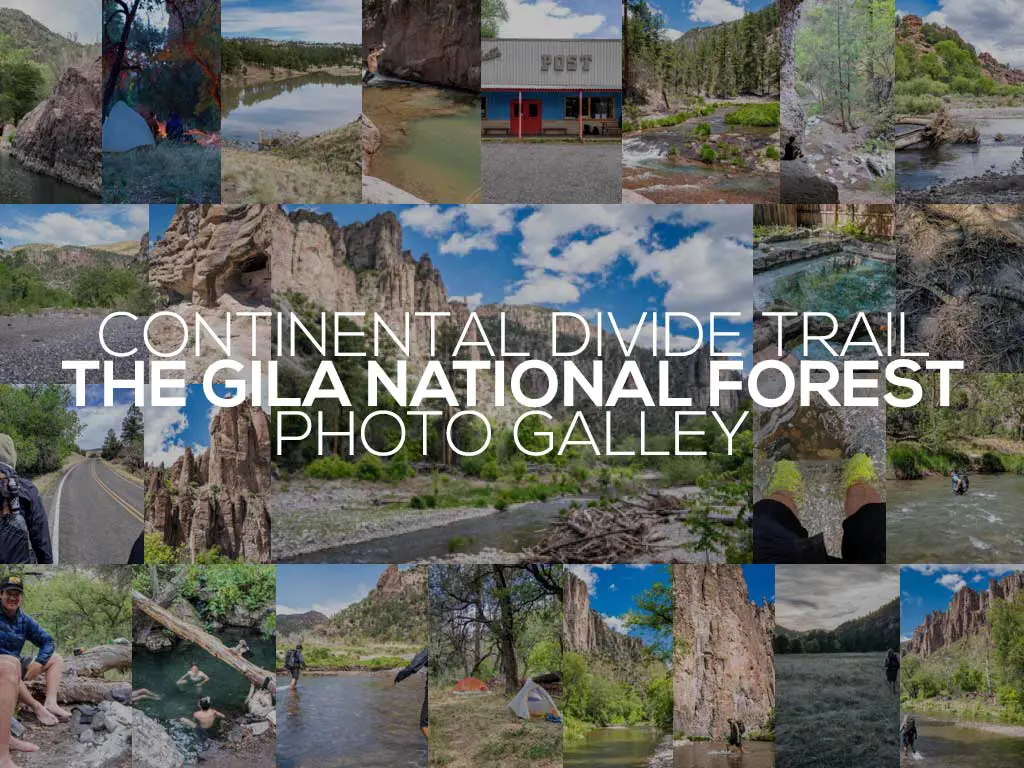

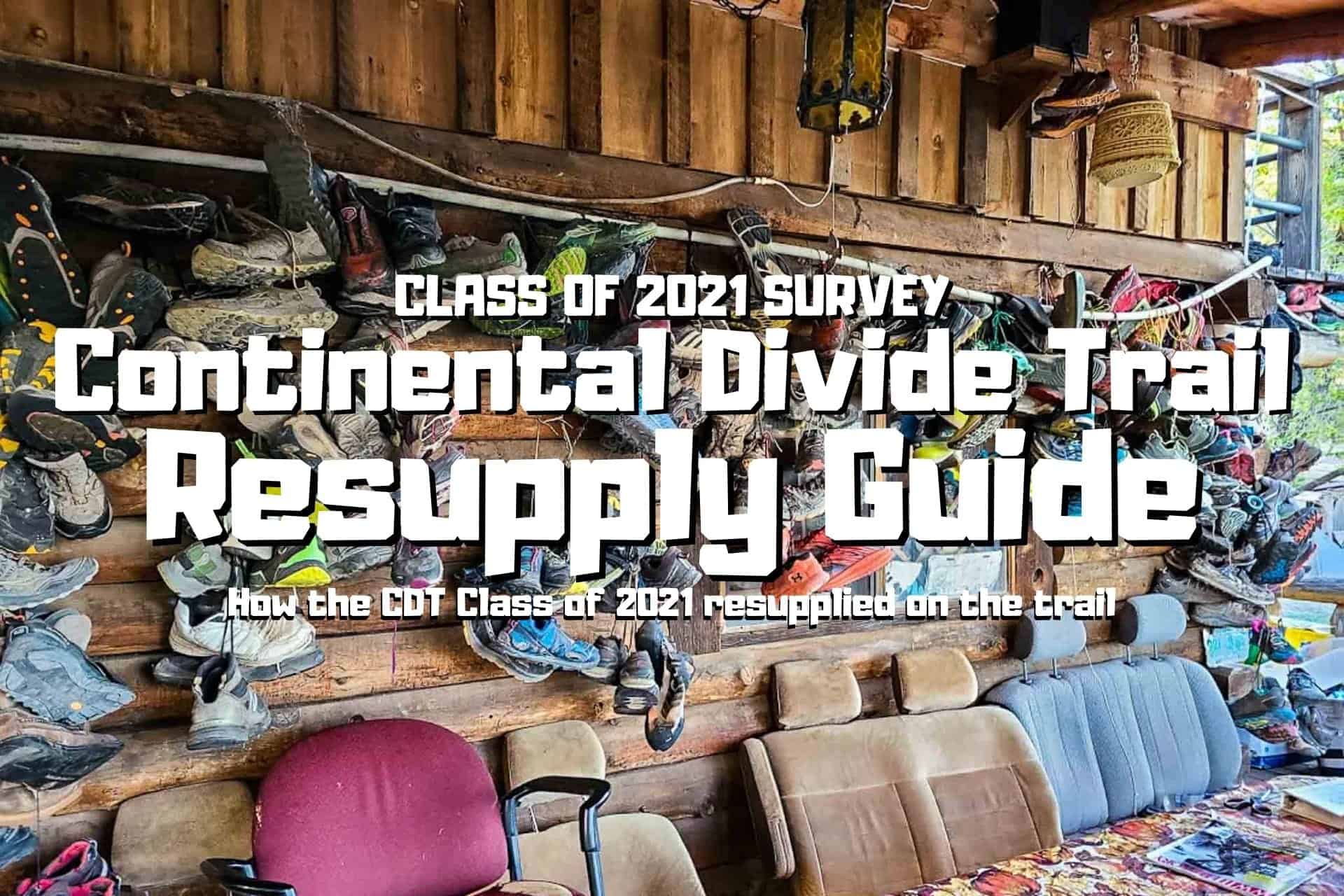

Thanks for amazingly detailed data for both the PCT and CDT. I was comparing the 2019 hiker education data for the two trails and it looks like the CDT pie chart is updated but the word descriptions are actually from the PCT. Again, thanks for this resource!
Thank you for pointing this out! It’s been fixed.
In the questions for Animal encounters it would be nice to understand how many did see a particular animal, and how many did not. So you get to know what is the chance/risk of seeing a grizzly :-)
I feel like the information presented here tells you this? If I’m wrong, let me know.
Great work with the survey, as always! Just wanted to let you know how much I appreciate the work you put into these articles, they are an amazing planning resource <3
Thank you, friend.
FYI – link the Big Agnes Copper Spur UL1 leads to the Osprey Exos 58
Thanks for that – it’s been updated!
“A look at CDT hiker distribution across the world – we’ve got representation from every continent”
South America? Africa? (is this too nit-picky?)
Love the survey as always
-RightOn, class of ’16
This is the perfect amount of picky – updated!
“There were a few times I was high and exposed on a ridge during a thunderstorm” Q: ‘high’ as in stoned or high as in altitude?! Awesome survey! – Pot & Lid
I interpreted this the same way and decided it would be best left ambiguous :)